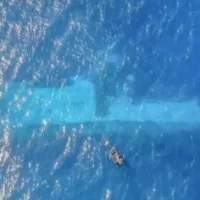
The ban on fishing, swimming and all water activities is continuing in the Safata District, as daily seawater testing shows continued diesel contamination, as a result of the HMNZS Manawanui sinking more than two months ago.
The finding was confirmed by the Chairman of the Marine Pollution Advisory Committee (M.P.A.C.), Fui Mau Simanu, responding to the Samoa Observer.
He said the test results show the presence of peaks consistent with those found in the diesel samples from the Manawanui wreck.
The affected area covers the whole of Safata coast, a community of more than 5000 people who have not been able to fish since the prohibition was announced.
Fui added the prohibition order will be in place until the continuous tests confirm the zero presence of diesel, and other pollutants from Manawanui.
The vessel currently sits 35 meters below the surface off the coast of Tafitoala with approximately 200,000 liters of diesel leaked into the ocean.
M.P.A.C. had also found there is substantial damage to the reef of approximately 5000 square meters from vessel collision and anchor friction.
Efforts are underway to extract 900,000 liters of diesel inside the naval ship. Vessels and equipment from around New Zealand have been loaded and secured on a barge for passage to Samoa.
Fui said biosecurity requirements and other approvals are being met to commence passage to Samoa, and the salvors have received multi-agency support to complete these important steps.
It is expected that the fuel removal itself will commence in December.
The duration of the operations will depend on factors such as weather conditions.
The contract is supported by a fuel removal methodology which has been shared and endorsed by the Samoan authorities.
The US Coast Guard has also been engaged by M.P.A.C. to provide assistance in an advisory role. The Coast Guard has assembled a team with various fields of expertise to assist Samoa with the Manawanui assignment.




